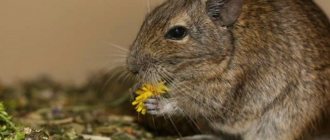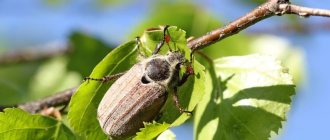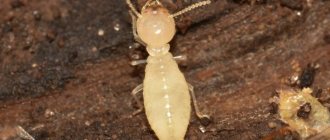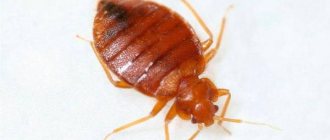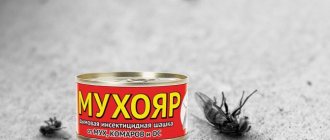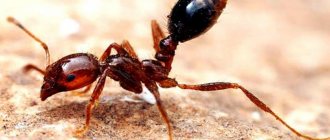Appearance
In appearance, the rodent of the mouse family is somewhat smaller than its relative, the gray pasyuk:
- body length does not exceed 22 cm;
- the tail is always longer - about 28 cm;
- body weight from 130 g to 300 g;
- the ears are small, but wide at the base, round, more like a mouse’s;
- the muzzle is elongated, round eyes are clearly visible.
The coat consists of an undercoat and long, hard outer hairs. The color is black with a greenish tint, but it can also be dark gray, like Pasyuk. On the sides the coat is always lighter – dirty gray in color. The tail is long, scaly, and completely covered with long black hairs. There is a small brush at the tip.
The color of the black rat differs depending on the region where it lives. Southern representatives are always lighter. Northern rats are black with a brilliant green tint.
Interesting!
The description of a black rat is always compared to a pasyuk. These are the main competitors who do not get along well in the same territory. Gray relatives are superior in numbers, size, predatory habits, and ability to quickly adapt. But black rats are more resistant to poisons.
A photo of a black rat is presented below; you can clearly see the animal in all its glory.
Black rat
Preliminary control of rats, damage from rodents
Preventive measures to control rats
Since rodents are active throughout the year, it is necessary to periodically check for signs of their presence. If rodents have infested your garden or lawn but have not yet entered your home, then it is only a matter of time, and if you do not take measures to combat rats, they will definitely appear in your home. Experience shows that the sooner you start exterminating rats, the less effort will be spent on installing baits and rat traps.
Conduct a thorough inspection of the home and surrounding areas. If you do not know and do not want to take measures to exterminate rats yourself, then you should contact professionals from specialized companies involved in the extermination of rats. If you detect at least one of the following signs, your home is probably infested with rodents, and then rat control is inevitable.
- Is there rat feces near dog and cat feeders or food bags?
- You can hear rustling or scratching noises in the attic in the evening or at night.
- The woodpile contains the remains of rat nests. After this, you should immediately set traps to kill rats.
- A dog or cat brought a dead rodent into the house.
- Nibbled fallen apples or other garden fruits were found on the ground in the garden or in the house (on the terrace).
- Among the plantings there are holes and bitten vegetables.
- You may notice rodents running across garden paths or sitting at dusk (or near-darkness) on the tops of a picket fence.
- Rats' nests are found in unattended cardboard boxes or table drawers in a barn or woodshed. In these places you can place poisonous briquettes to fight rats.
- You can find rodent hair left behind by rubbing against rafters, beams, and chimneys in the attic.
- Burrows are visible under compost heaps or under garbage cans.
- Rat feces were found in the kitchen trash can.
- A dead rodent floats in a garden pond or water collection tank.
- Under the woodshed or doghouse, there are clearly visible tunnels.
The main independent measure to combat rats is the installation of rat traps. You will find information on methods of placing rat traps in the article “ Basic aspects and devices for fighting rats .”
Harm from home infestation by rats
Rodents eat spoiled food and pet food. They make holes in containers and packaging materials containing food and feed. Both types of rats gnaw electrical wires, wooden objects - doors, planks, slats, corners and wall materials, they tear insulation in walls and ceilings in order to make a nest. Establishing nesting sites will help in organizing rat control.
With their burrowing activity, gray rats can dig through the foundations of buildings and foundation slabs, and can chew all types of materials, including soft metals such as copper and lead, as well as plastic and wood. As for the black rats that occupy the upper levels of buildings, they cause significant damage by gnawing on everything to build their nests. They also spoil garden crops and ornamental plantings. Therefore, the fight against rats also preserves the plantings.
Among the diseases transmitted by rodents to humans or domestic animals are endemic rat typhus (rat rickettsiosis), salmonellosis (food poisoning), leptospirosis, sodoku (rat bite disease), and plague.
Location
Where the black rat lives is a very interesting question. The favorite habitat for the rodent is sea vessels. Rats live side by side with humans and eat identical food. They spread around the globe thanks to water transport.
The black rat is less inventive than its relative the Pasyuk. Content with little. Settles near reservoirs and rivers. But it is less attached to water than the gray one. Does not build nests in the ground, avoids water, but if necessary, swims quite a long distance. It does not dive because fish, fry, and amphibians are of little interest to it.
Willingly settles in the forest, fields, and edges. The lifestyle is more reminiscent of voles. In urban areas, it prefers sewers, abandoned buildings, garages, garbage cans, and entrances. Can live in a person’s house, occupying the upper floors or attic.
Habitat
Black rat
Asia - tropical and subtropical - is the place from where black rats began to spread throughout the world. Now they are found in many countries. But they can live in nature independently of humans only in places with a warm climate. In Russia, the Urals and Siberia, this animal is almost never found, since in the cold season it does not reproduce, even in human habitation. This animal is heat-loving, so pasyuki “seized power” everywhere, since they are more hardy.
Rodents spread throughout the world through human transport. Since they are excellent climbers on various surfaces, it was not difficult for them to get onto the ship through the ship's ropes in the port city. This is how rats ended up in countries where they could not survive in nature.
Black rat baby and dog
In warm regions, the black rat very often lives outside human settlements. In the tropics and subtropics they are more common than pasyuki, as they are less attached to humans. Many species love to climb trees. In the southern tropical forests live families of rats that do not come down from the trees for many generations.
It is common for black rats to find shelter on the ground among stones, fragments of rocks and buildings, logs, and more. A very rare activity that you can catch a black rat doing is digging holes. They do this only if there is a complete lack of natural shelter.
Black rat eats
When settling next to humans, black rodents have to share space with gray ones. This happens without fighting, as the animals strictly observe the division of the territory. If pasyuki live in basements, sewers, etc., then black rats prefer attics. And in southern countries they live in gardens.
Black rats are vegetarians, but on occasion the animal regards insects, eggs and milk as delicacies. The basis of a rodent's diet is grains, fruits, nuts, etc. Having climbed into storage with grain, flour and other products, rats not only eat, but contaminate the food, making it unfit for consumption.
Having found a suitable object for lunch, the black rat, like many rodents, holds it with its front paws while eating.
Lifestyle
Habitat of the black rat
The black rat builds nests in old hollows and trees. For construction he uses twigs, sticks, and moss. The rodent's house looks more like a magpie's nest. Often rodents simply occupy a ready-made nest, eating the legal inhabitants.
Black rats spend the day in the nest, hiding from the sun's rays. They intensify their activity after dark. They behave carefully. Because there are plenty of natural enemies - dogs, cats, hedgehogs, birds, wolves, foxes.
The black rat part can be seen on the tree. The rodent climbs well on horizontal and vertical surfaces. If necessary, climbs to the very top.
On a note!
In the old days they lived in a man's house under a thatched roof. Modern rodents prefer attics. They share territory with pasyuki. The first live above, the second below under the floor.
The average lifespan of an animal in the wild is 1 year. As a pet it lives up to 4 years.
Interesting Facts
The black rat has been known to mankind since the ancient period, and during this time people have collected many interesting stories and facts about these animals. Among them there are several that are simply amazing and even shocking:
- in the Middle East and Mediterranean, the remains of this (or a similar) species of rat were found, which belong to the Pleistocene era and may have lived next to mammoths;
- In China and India, a natural phenomenon called “The Death of Bamboo” is associated with black rats. It lies in the fact that once every 48 years, there is a surge in the population of these rodents and they eat all the fallen bamboo seeds. As a result, the bamboo forest does not grow the next year;
- during the plague pandemic in Europe, the main carriers of the deadly infection were black rats;
- The mythological animal called the "Rat King" has a real-life prototype. In the habitats of black rats, sometimes clusters of rodents are found that are connected by their tails. In this case, the tails of the animals are often broken and damaged. Such “nests” are popularly called “Rat King”. The “Rat Kings” preserved in alcohol were even shown in museums in various European cities. One of the largest “Kings” is considered to be found in the city of Bukhgait, which consisted of 32 rats.
Rats in the city (observer photo).
Nutrition
The black rat can hardly be called a predator. The rodent prefers plant foods, plant seeds, grains, vegetables, and fruits. Protein foods make up a small part of the diet. Occasionally eats beetles, worms, and may covet bird eggs.
Interesting!
A rodent eats 15 g of food and 15 ml of water per day. Hunger is difficult to bear. In the absence of food, it can live no more than 2 weeks. If there is a shortage of water, it dies within a week.
Baby rats
Reproduction
Black rats are not as fertile as their pasyuki relatives. During the year, the female gives no more than 5 offspring under constant living conditions. In the wild, only 3 offspring are produced. With the onset of the cold season, sexual activity decreases.
There are from 3 to 11 cubs in one litter. In contrast to gray pasyuks, cannibalism is less developed. Females rarely eat the young, but protect the nest from the male. The animal enters into sexual contact with several males at once. Pregnancy lasts about 28 days.
The need to combat rats, their main types and comparison
The main types of rats inhabiting homes
People don't often see rats, but traces of their presence are often found. There are two main types of rodents that bother humans. These are a black rat and a gray rat. It is important to know which rodent has entered your home so that the fight against rats is effective.
Gray rat , or pasyuk (Rattus norvegicus). This rat is sometimes called a brown rat (actually a greyish-red color) or a sewer rat. This is a squat burrowing rodent, larger in size than a black rat, and belongs to synanthropic mammals. Rat holes are located along the foundations of buildings, under garbage heaps, woodpiles and in wetter areas around gardens and fields. Extermination of rats must be carried out in all these places. Nests can be lined with scraps of paper, rags or other soft materials. When gray rats get inside buildings, they usually stay in basements or on the first floors. Gray rodents are common throughout central Russia, where humans live. In the northern regions, extermination of rats is less expensive than in the southern regions.
The black rat (Rattus rattus) is also a synanthrope slightly smaller than the gray rat. Black rats are not like gray rats - their tails are longer than their bodies. They are more agile than their relatives, climb, live and make their nests usually above the ground in bushes, trees, or dense plants such as ivy. Therefore, controlling rats in these areas is difficult. In buildings, black rats find refuge in open and elevated spaces such as attics, false ceilings and wall decorations. Black rodents are more geographically restricted than gray rodents, preferring to range closer to water in warmer climates. In areas where the black rat has established itself, gray rats may also be present. To make the destruction of rats more effective, it is necessary to establish the type of rodent, for example, by seeing it in the bright beam of a flashlight, or if it was caught in a trap.
Since rats are larger in size than the common house mouse or even the common house vole, a young rat may resemble a mouse. In general, a very young rodent has a larger head and legs in proportion to its body, while an adult mouse is proportionally much smaller. Both rats and mice chew on woodwork, but rats leave deeper marks than mice. Typically, rat control is carried out in conjunction with mice extermination.
Rats, like house mice, are most active at night. They have poor eyesight, but compensate for this deficiency with excellent hearing, smell, taste and touch. Rodents constantly explore and study, remembering the location of paths, obstacles, food and water, shelters and features of the terrain around them. They quickly identify new objects and new foods and tend to avoid them. Thus, they often avoid traps and bait for many days after they are set. This feature complicates the fight against rats. Although both types of rodents have a habit of avoiding new objects, this tendency is more characteristic of black rats than gray ones. Therefore, when fighting rats, this circumstance must be taken into account.
Both species increase their entry points into structures by gnawing, climbing, swimming and jumping through holes and cracks in toilets or broken drainage systems where rat control is very difficult. Especially young individuals can slip under a door or into a gap measuring 10-12mm. If the door is wooden, then the rodent, if necessary, gnaws and widens the gap. Gray rats swim better, while black rats are faster and climb better. These features help determine the type of rodent and thus rat control measures.
Gray and black rodents coexist together. The gray rat is larger and the dominant species, and will kill the black rat in a serious confrontation. When both species occupy the same house, the gray rat predominates in the basements and first floors, and the black rat predominates in the upper floors and attic. The two species cannot interbreed, although there are several opposing concepts. Both species may share the same food resources, but never feed side by side. Typically, rodents will grab food and take it to a secluded area to eat it, which creates additional problems for killing rats if the bait is poisoned.
There have been cases when a rodent, for some reason, bit sleeping adults and children, so the need to exterminate rats is especially urgent.
Comparison of black and gray rats
Gray rats eat a variety of foods, but for the most part prefer grains, meat, fish, nuts and some fruits. In search of food and water, they usually explore an area with a diameter of 30-50 meters, less often they travel at a distance of 100 meters from their shelters or nests. It is difficult to control rats in such areas. On average, a female gray rat bears 4-6 litters per year and can successfully wean 20 or more pups without fear for their lives.
The destruction of rodents of different species has differences. Like gray rats, black rats eat a variety of foods but love fruits, nuts, berries, slugs and snails. Black rats especially prefer grasshoppers and citrus fruits and often feed on fruits still hanging on the tree. When the fruit is ripe, they make a small hole and suck out all the contents through it, leaving only the shell hanging on the branch. They can eat the lemon peel, leaving the juicy pulp hanging. To combat rats, you can use this feature by leaving the infected fruit on the tree. The favorite haunts of black rats are attics, trees, and dried bushes. Landscaped residential or industrial areas provide excellent housing for black rats, as they contain planted vegetation and natural or artificial water sources. Rat extermination is not usually carried out in these areas. They prefer not to nest on the surface of the ground and rarely dig holes for housing if there are places somewhere higher. Black rodents routinely travel 100 meters or more in search of food. They can live in one place and constantly forage for food in another. This must be taken into account when fighting rats. They can often be seen at night running along communication and electrical lines, or along the tops of fences. They have an excellent vestibular apparatus, and they also use their long tail for balance when running over wires and fences. Black rats move faster than gray rats and are very agile climbers, allowing them to quickly elude predators. They can live in trees or attics and drag food resources into them. The average number of litters for a female black rat ranges from 3 to 5 per year with 5-8 cubs, depending on many factors.
Baby black rats
They are born naked, blind, deaf, with undeveloped limbs. But they have an excellent appetite, and significant physical transformations occur every day:
- within a week they become overgrown with fluff;
- after two - hearing appears, eyes open;
- within three weeks, the formation of the limbs and skeleton is completed, and the pups crawl out of the nest.
After a month, the cubs of black rats become independent, eating food typical for adults. They are expelled from the nest, but continue to live in the same colony. The female becomes sexually mature at 6 months.
Baby rats
Newborn black rat cubs are characterized by the following:
- complete absence of fur;
- blindness;
- deafness;
- underdevelopment of the limbs.
With all this, kids have an excellent appetite. Every day, the pups noticeably change physically:
- after a week of birth, they start to have fluff;
- after 2 weeks they begin to see and hear;
- after 3 weeks, their skeleton and limbs are fully formed, after which the babies crawl out of the nest.
Month-old baby rats are already absolutely independent - they eat “adult” food, etc. Parents kick their offspring out of their nest, and the grown-up individuals begin an independent life, becoming full-fledged members of the rat colony to which their parents belong. In young females, puberty is completed by six months, after which they are ready to have their own offspring.
Harm to humans
Black and gray rats are equally dangerous to humans. Rodents spread terrible diseases, carry pathogens, worm eggs, and fleas. In the previous century, the black rat was the main carrier of plague.
They spoil and destroy food supplies. They get into warehouses, barns, storage rooms, cellars. In the spring, an invasion of black rats is dangerous due to gnawing on the bark of young trees and the death of plants. In the fall, the harvest is spoiled.
In the house, pests gnaw on walls, furniture, decorative items, and wall insulation. Rodents even grind what is of no nutritional value to them in order to stop the growth of teeth.
Population status and significance for humans
The black rat is a widespread and numerous species that has prospered thanks to human economic activities, which provided this rodent with shelter, food and the possibility of resettlement. However, over the past 200 years, the black rat's range in temperate Europe has sharply declined and fragmented. It is believed that the black rat is being replaced by a more fertile and hardy bee; however, competitive relationships between the two species of rats only occur when living together inside human structures. Under natural conditions, they do not compete due to the mismatch of ecological niches. Does not have a negative impact on natural communities; numbers are not subject to outbreaks. In nature, black rats are prey for some predatory mammals, diurnal birds of prey and owls; in buildings they are destroyed by cats, dogs, hooded crows and humans.
The economic harm is similar to that caused by the gray rat: it destroys and spoils food, damages buildings, furniture, etc. It is more resistant to poisons than the gray rat. Thanks to its habit of living on ships and fleas that parasitize rodents, the black rat widely spread various infections, including plague. In addition to plague, it carries leptospirosis, visceral leishmaniasis, salmonellosis, trichinosis, yersiniosis and other diseases.
Fighting methods
Relocation closer to a person’s home occurs when unfavorable conditions occur - lack of food, premature cold snap, forest fires.
- In gardens, trees are tied with belts to prevent rats, and glue or resin is applied.
- For destruction, traps and traps are placed on the summer cottage.
- Chemicals are used on the territory of the house - poisonous baits, powders, dusts, and traps are built.
- If the premises are severely infested, specialists are called in.
Black rats are not characterized by seasonal population fluctuations. There are no widespread outbreaks of infection observed. It is advisable to use repellent methods to control pests. They use herbs, substances with a pungent odor, and repellent devices.
Preliminary rat control, main types and damage
Rats cause serious economic harm and often psychological damage to human health. These rodents are carriers of infections to pets and humans, eat and spoil food, and render furniture unusable. All this forces us to fight rats. To avoid troubles with the appearance of rodents in the house, there is no need to skimp on preventive rat control. Rats live in various climatic zones, near houses and buildings, next to peasant farms, as well as in open areas. Consequently, exterminating rats is not always entirely simple and requires different approaches, depending on the type of rodent and the degree of infestation.

